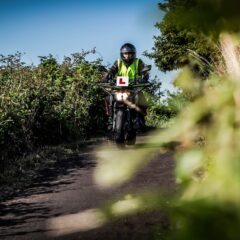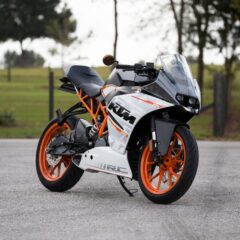
7 Top Motorcycle Accessories
With Christmas just around the corner, you might be wondering what to get your favourite motorcycle enthusiast or even a little something for yoursel...
 Phoenix Motorcycle Training LTD
Phoenix Motorcycle Training LTD
 Phoenix Motorcycle Training LTD
Phoenix Motorcycle Training LTD

The simplest way to approach motorcycle licences is from the perspective of your age and the kind of bike you want to ride. The younger you are, the lower the power of the motorcycle you’ll be allowed to ride. An A1 licence is for riders between the ages of 17 and 19.
That said, if you only want to ride a 125cc motorcycle or scooter, an A1 licence is all you’ll need, no matter how old you are.
There are different routes to getting a full motorcycle licence. Some routes have to include an A1 licence, while others can skip from your CBT certification all the way to an unrestricted A licence in a few months. It comes down to your age and the kind of motorbike you want to ride. Getting prepared for your CBT course takes a little preparation. Learning how to balance on a bike, preparing mentally and reading the Highway Code will give you a good start.
Nearly all motorcycle licencing begins with Compulsory Basic Training. There are some exceptions, but for most people, learning to ride a motorcycle or scooter begins with the basics. The CBT certification makes sure you know how to handle a low-powered two-wheeled motor on public roads safely.
The earliest age you can get a CBT certificate is at 16. Your CBT certificate, combined with a provisional driving licence, shows that you can legally ride a 50cc scooter or motorcycle on UK roads. You’re not able to carry pillion passengers, and neither can you ride on the motorway. You’ll have to display L-plates to show you’re still learning to ride.
After your CBT at 16, the next level of motorcycle licence opens up to you. This AM licence allows you to ride the same powered motorcycle or scooter, but you can take pillion passengers. You won’t need to show L-plates any longer, but you still won’t be able to ride on the motorway.
After your 17th birthday, you can test for the next level of motorcycle licence. The A1 licence for motorcycles or scooters lets you move up to a more powerful machine. Anything up to 125cc is legal to ride with an A1 licence.
After achieving an A1 licence, you’ll be able to ride on the motorway too – as long as your motorcycle has 125ccs of power. Motorcycles, scooters and mopeds with lower than 50cc engines aren’t allowed on the motorway – no matter what level of licence the rider holds.
On your 19th birthday, you can take the next stage of your motorcycle licence journey. This is the A2 licence and it lets you move to an even more powerful machine – up to 35Kw which is approximately 500cc.
Many riders may be happy to stick with an A2 licence. There are no restrictions on the roads you can use, as with the AM licence, and there are plenty of great 250cc to 500cc bikes to ride. Visor down has a great list of best-value 500cc motorcycles that combine speed and handling for smaller budgets.
The last hurdle in the motorcycle licencing journey is the full unrestricted A licence. If you are 24 years old, or older, you’ll be able to train and test for this level of licence.
Yes. Any of the licence levels—aside from the CBT certificate—can be skipped, as long as you are old enough to do so. For example, you may decide to get your CBT certification at the age of 16 and ride with this until you are 17. Once you reach your 17th birthday, you can test for your A1 licence, skipping the AM licence altogether.
Similarly, if you are 24 or older, you can choose to qualify for a CBT certificate. After a little practice, it is possible to take direct access training for a full, unrestricted A licence. This effectively skips all licence levels in between. There is no need to get your AM, A1 or A2 licence with Direct Access Training at 24 years of age or older.
Not everyone wants to ride a motorcycle when they are the tender age of 16. And some of us that do simply aren’t allowed to, thanks to cautious parents! Rather than penalize those of us that took a little longer to learn to ride, a second path to getting a full motorcycle licence is available.
This is commonly referred to as Direct Access Scheme training or DAS training. The idea of DAS training is to get riders qualified for the highest level licence they can achieve given their age and preference for the motorcycle or scooter they want to ride.
As with the early learner’s journey to motorcycle licencing, the fast-track method begins with Compulsory Basic Training. Your CBT is important because it teaches you the very basics needed to be safe on UK roads.
Once you’ve been awarded your CBT certificate, you’ll need to pass your theory test. Once that’s in the bag, you can book your DAS training and test for the highest level of licence for your age.
Age restrictions still apply. If you’re 19, the highest level of licence you can get is an A2 licence. If you are 24 or older, you’ll be able to test for a full unrestricted A motorcycle licence.
A 250cc motorcycle is too powerful for an A1 licence. To ride a 250cc motorcycle, you’ll need an A2 licence or higher. Having a higher level licence doesn’t stop you from riding lower powered bikes. So getting the highest level of motorcycle licence you can for your age, makes sense.
The paths to gaining a motorcycle licence can be confusing. If you’re thinking about learning to ride a motorcycle or scooter, whether it’s an A1 licence or higher that you’d like to get, give our team a call. We’re always happy to help and chat motorcycles with you!

With Christmas just around the corner, you might be wondering what to get your favourite motorcycle enthusiast or even a little something for yoursel...

If you love motorcycle riding, you’ve probably daydreamed about riding a motorbike for a living. A professional racer or stunt rider is OK for some...

Getting a UK motorcycle licence can seem a complicated process. Particularly when compared to a driving licence for a car. Whether you choose the pro...
This website uses cookies to personalise content, ads, and analyse traffic, sharing data with partners who may combine it with other information. See our Privacy Policy for more information.